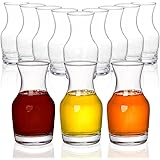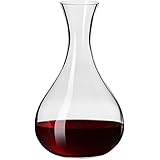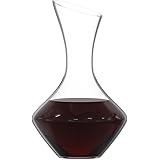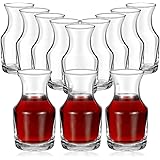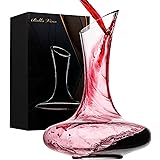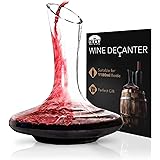The Great Wine Divide: Unpacking the $1, $20, and $1,000 Wine Taste Test Paradox
Could you truly distinguish a budget bottle from a luxury vintage in a blind setting? The captivating video above illustrates a common dilemma, where a seasoned consumer, accustomed to spending around $30 on wine, tackles the monumental challenge of differentiating between a $1, a $20, and a $1,000 bottle. Their insightful attempt to navigate this complex sensory landscape highlights the profound psychological elements influencing our perception of quality and value. This fascinating experiment invariably raises pertinent questions about how price dictates our expectations, even before the first sip crosses our lips.
The Cognitive Labyrinth of Blind Wine Tasting
Firstly, the human palate often proves less discerning than we might assume, especially when cognitive biases are removed through blind tasting protocols. Numerous scientific studies, including those published in journals like the Journal of Wine Economics, consistently demonstrate that even professional tasters struggle to identify wines correctly across varying price points when labels are obscured. A significant proportion of participants in such experiments frequently misattribute high-end wines to lower categories and vice-versa. This phenomenon suggests that much of our perceived enjoyment stems from expectation rather than intrinsic sensory attributes.
One notable study, which involved experienced tasters evaluating identical wines with different price labels, revealed a statistically significant correlation between higher price tags and increased reported enjoyment, even when the wines were objectively the same. The participant’s initial confusion in the video—”now I’m all sorts of confused” and “I just don’t trust my own opinion”—perfectly encapsulates this psychological battle. Removing the external cues of price forces us to rely solely on our senses, which can be remarkably unreliable without prior knowledge and extensive training. This illustrates the powerful influence of preconceived notions on our gustatory experience, challenging the very essence of objective evaluation.
Deciphering Wine Value: Beyond the Price Tag
Secondly, the immense price disparity between a $1, a $20, and a $1,000 bottle of wine stems from a complex interplay of intrinsic and extrinsic factors that transcend mere taste. While a $1 wine often represents mass-produced, industrial vinification with minimal investment in grape quality or aging, a $20 bottle generally signifies a step up in craftsmanship and regional authenticity. The $1,000 bottle, exemplified by the aerated Bordeaux in the video, inhabits an entirely different echelon, driven by scarcity, provenance, and meticulous production standards that define luxury viticulture.
Specifically, the factors contributing to such extreme valuations include the terroir, which encompasses the unique combination of soil, climate, and topography specific to a vineyard; vintage, referring to the specific year of grape harvest, where exceptional climatic conditions can lead to highly sought-after wines; and labor-intensive viticultural practices, such as hand-harvesting, meticulous canopy management, and rigorous grape selection. Furthermore, the winemaking process itself, involving extended barrel aging in new French oak, traditional techniques, and the expertise of renowned oenologists, adds substantial cost. The reputation of the estate, historical significance, and the wine’s proven ability to age gracefully for decades also significantly inflate its market value, attracting collectors and connoisseurs who view these bottles as liquid assets rather than mere beverages.
The Influence of “100 Rated Wines”
Thirdly, the reference to “100 rated wines” by the wine shop employee points to the profound impact of wine critics and their scoring systems on market dynamics and consumer perception. Critics such as Robert Parker Jr. or publications like Wine Spectator employ a 100-point scale to evaluate wines, with a perfect score signifying extraordinary quality and rarity. Achieving a 100-point rating instantly elevates a wine’s status, driving demand and often skyrocketing its price on the primary and secondary markets. For instance, a Bordeaux Grand Cru Classé receiving such a rating can see its value appreciate by hundreds, if not thousands, of percent.
These ratings serve as powerful benchmarks for collectors and investors, guiding purchasing decisions and establishing a common language for quality assessment within the industry. However, it is crucial to recognize that a 100-point score reflects a critic’s subjective judgment, albeit an expert one, at a specific point in the wine’s evolution. While these wines generally exhibit impeccable balance, complexity, and age-worthiness, individual palates may still vary, meaning a 100-point wine might not universally align with everyone’s personal preferences. The pursuit of these highly rated bottles often signifies a desire for guaranteed excellence and a form of social currency within affluent circles.
The Art and Science of Aeration and Decanting
Fourthly, the conscious decision to aerate the “$1,000 Bordeaux” before tasting is a critical detail that underscores its sophisticated nature. Aeration, the process of exposing wine to air, is particularly beneficial for younger, more tannic red wines or older wines that have been sealed off from oxygen for decades. When a young, robust red like a powerful Bordeaux is aerated, oxygen interacts with its complex chemical compounds, softening harsh tannins and allowing subtle aromatic nuances to emerge more readily. This process, often facilitated by a decanter, can transform a tightly wound, reticent wine into a more expressive and approachable beverage, enhancing its overall aromatic and textural profile.
For an older vintage, careful decanting serves a dual purpose: it separates the clear wine from any accumulated sediment, which can impart bitter flavors, and gently introduces oxygen to “wake up” the wine after its long slumber in the bottle. This controlled oxidation helps dissipate reductive notes—unpleasant, sulfur-like aromas that can develop in oxygen-deprived environments—and allows the wine’s tertiary aromas, such as forest floor, leather, or dried fruit, to develop and present themselves more fully. Failure to properly aerate or decant a high-quality wine, especially a significantly aged one, means missing out on its full sensory potential, which would be a considerable oversight for such an esteemed bottle.
Cultivating the Palate: A Journey of Sensory Refinement
Fifthly, the participant’s journey in the video, culminating in correctly identifying two out of three wines, despite their initial self-doubt, highlights the potential for anyone to refine their sensory perception. Developing a sophisticated wine palate is a continuous process requiring dedicated practice and an understanding of key tasting methodologies. This goes far beyond a simple “tastes good” or “does not taste very good” assessment, encompassing the ability to identify specific aromas, flavors, textures, and structural components such as acidity, tannin, and alcohol. Professional sommeliers often spend years honing their skills, memorizing an extensive library of aromatic compounds and flavor profiles associated with different grape varietals, regions, and winemaking techniques.
Engaging in comparative tastings, where wines of similar varietals but different origins or vintages are sampled side-by-side, can dramatically accelerate learning. Focusing on specific attributes—like the nuances of oak, the acidity profile, or the length of the finish—helps build a mental database. The participant’s ultimate partial success, correctly discerning the most expensive and the cheapest, suggests that while subtle distinctions might elude an untrained palate, the fundamental quality markers are often perceptible. This underscores the notion that even without an expert lexicon, one can begin to appreciate the significant differences that justify varying price points, making a “$1,000 wine taste test” an invaluable learning experience.


